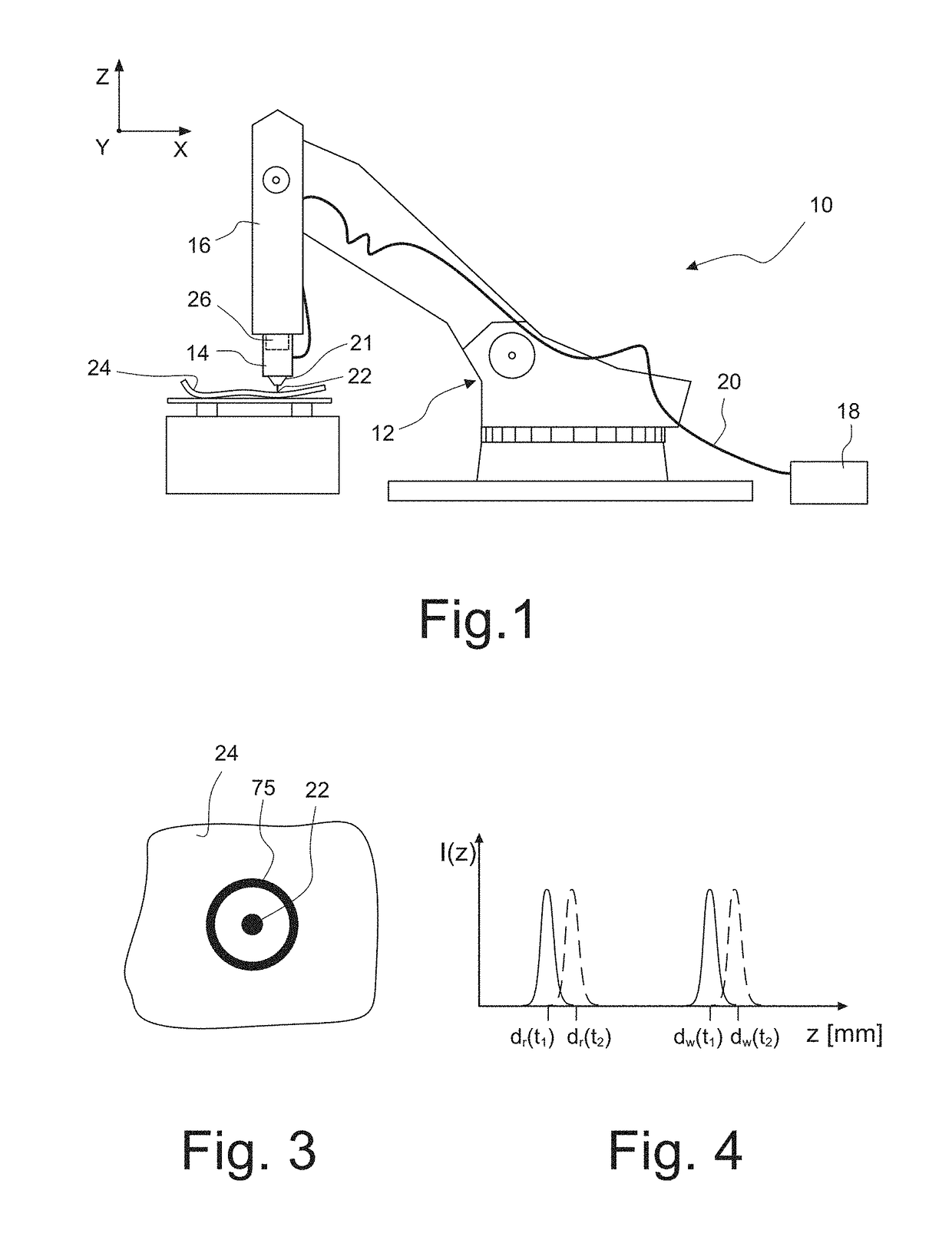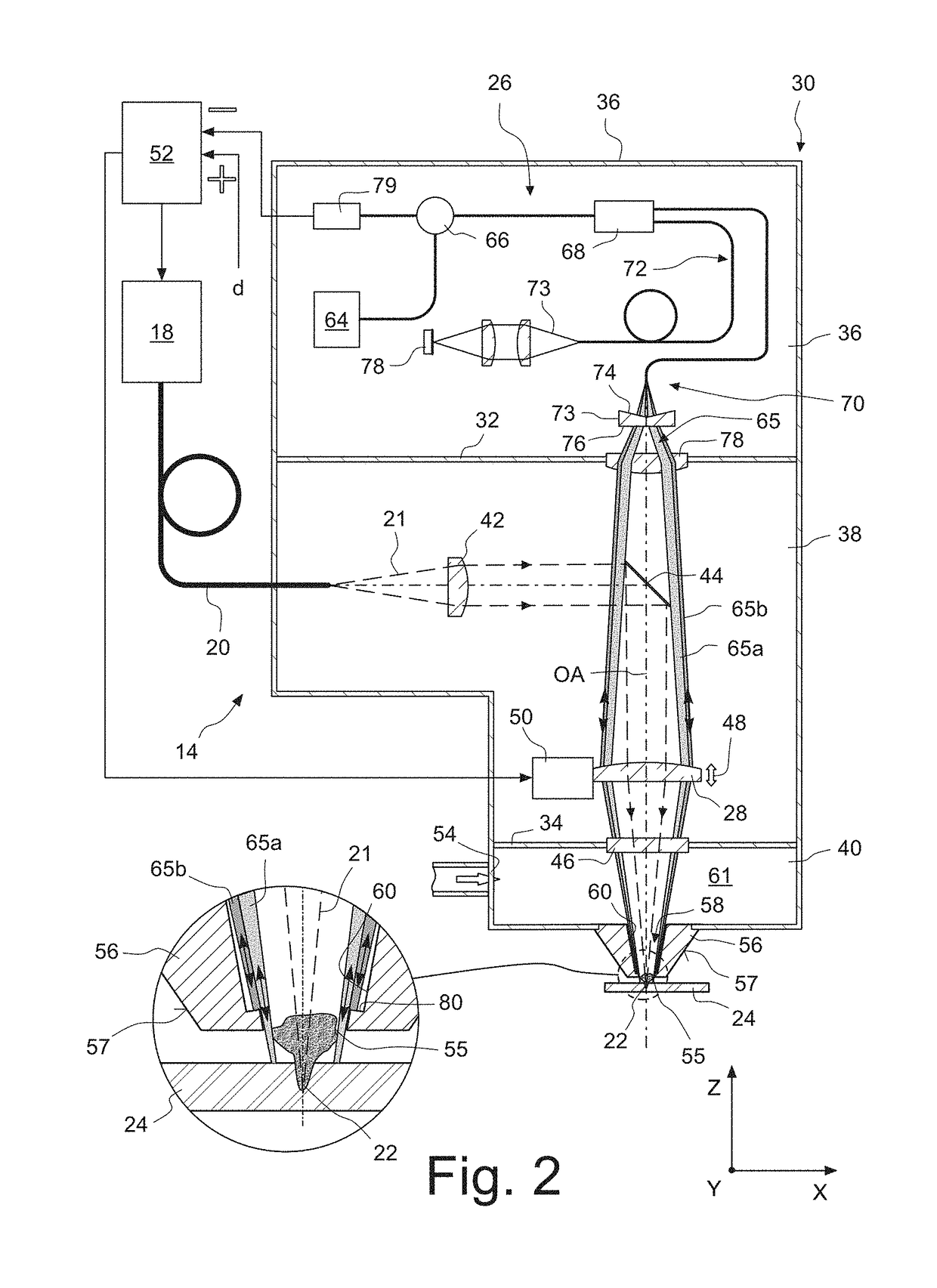Method for measuring the distance between a workpiece and a machining head of a laser machining apparatus
a technology of laser machining and distance measurement, which is applied in the direction of laser beam welding apparatus, manufacturing tools, instruments, etc., can solve the problems of difficult to precisely position the focal spot and not deliver reliable measurement results under all conditions, and achieve reliable and precise manner
- Summary
- Abstract
- Description
- Claims
- Application Information
AI Technical Summary
Benefits of technology
Problems solved by technology
Method used
Image
Examples
Embodiment Construction
[0059]1. Structure of the Laser Machining Apparatus
[0060]FIG. 1, in a schematic representation, shows a laser machining apparatus 10, having a robot 12, and having a machining head 14 according to the invention, which is attached to a movable arm 16 of the robot 12.
[0061]The laser machining apparatus 10 additionally includes a laser beam source 18, which, in the embodiment represented, is realized as a disc laser. Such lasers generate laser radiation having a wavelength in the order of magnitude of 1 μm. By means of an optical fibre 20, laser radiation 21 generated by the laser beam source 18 is supplied to the machining head 14, and is focussed by the latter in a focal spot 22 for the purpose of machining a workpiece 24.
[0062]The workpiece 24, which, in the embodiment represented, is to be cut by the laser machining apparatus 10, is a curved panel of a fibre-reinforced plastic. These are composed of an organic matrix, which is reinforced either with carbon fibres (carbon-fibre plas...
PUM
| Property | Measurement | Unit |
|---|---|---|
| diameter | aaaaa | aaaaa |
| diameter | aaaaa | aaaaa |
| diameter | aaaaa | aaaaa |
Abstract
Description
Claims
Application Information
 Login to View More
Login to View More - R&D
- Intellectual Property
- Life Sciences
- Materials
- Tech Scout
- Unparalleled Data Quality
- Higher Quality Content
- 60% Fewer Hallucinations
Browse by: Latest US Patents, China's latest patents, Technical Efficacy Thesaurus, Application Domain, Technology Topic, Popular Technical Reports.
© 2025 PatSnap. All rights reserved.Legal|Privacy policy|Modern Slavery Act Transparency Statement|Sitemap|About US| Contact US: help@patsnap.com



